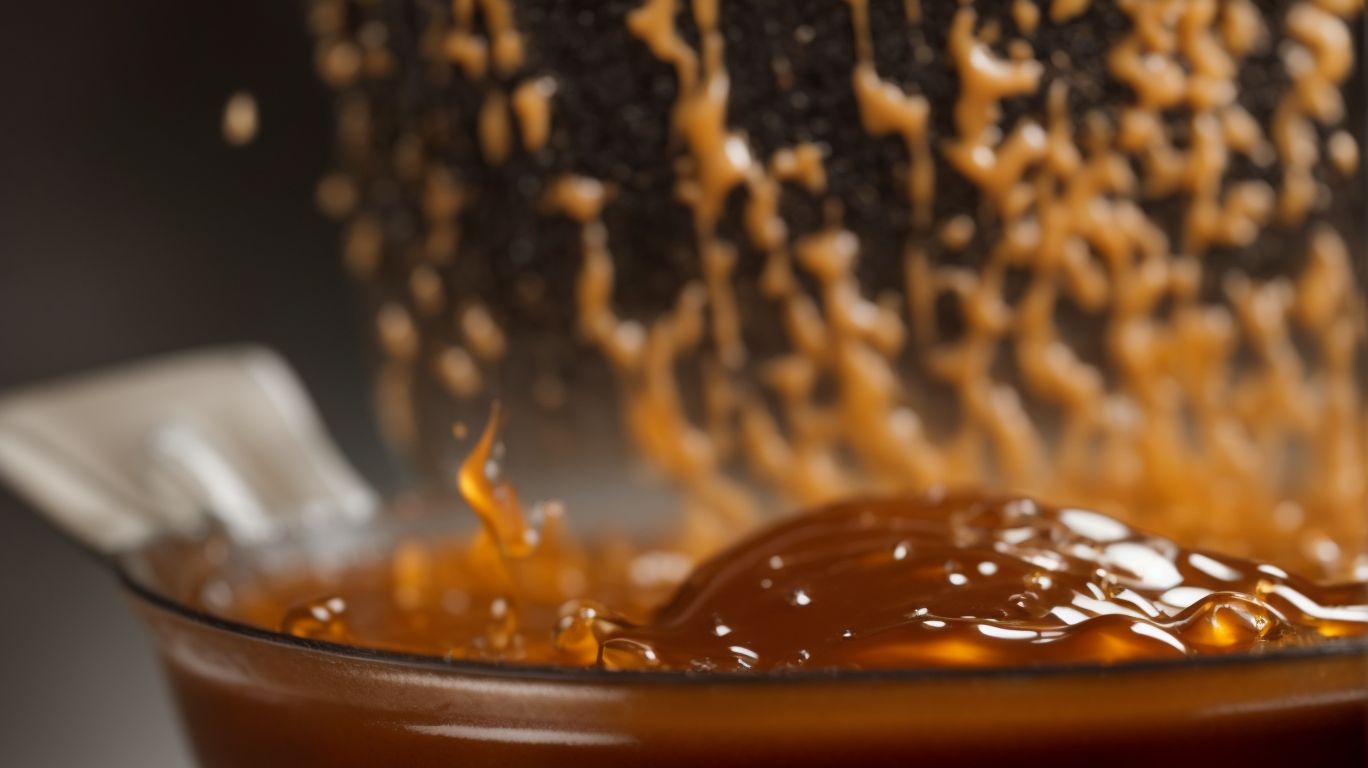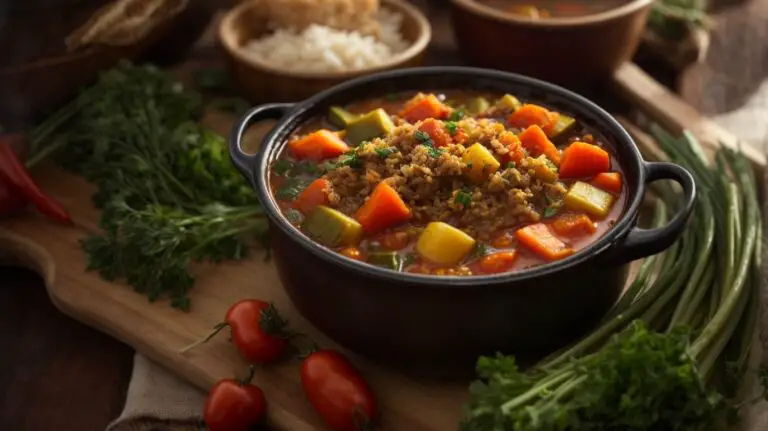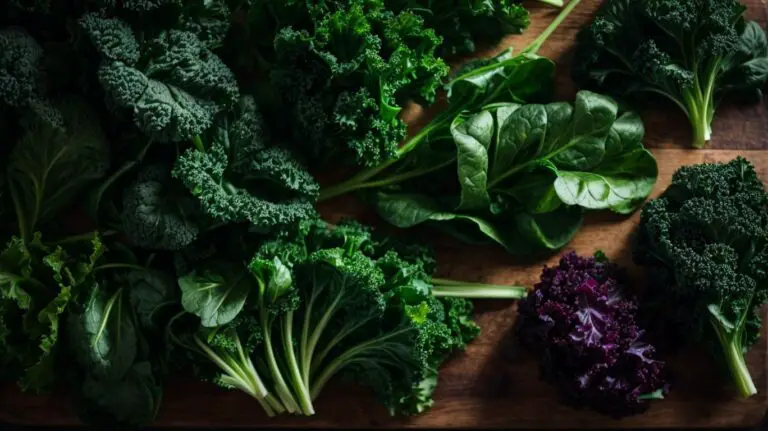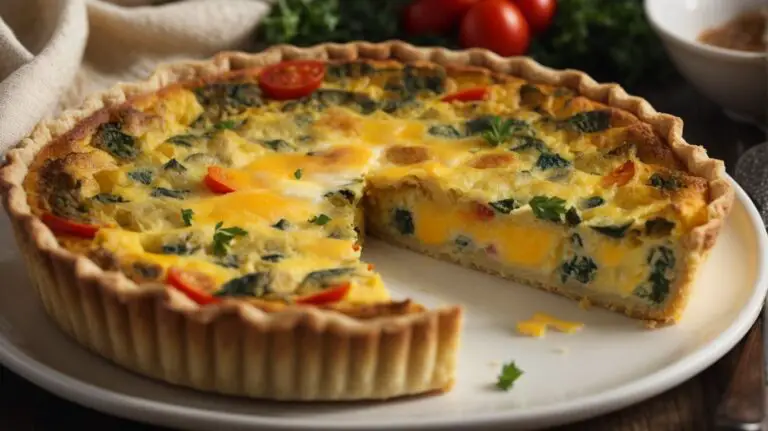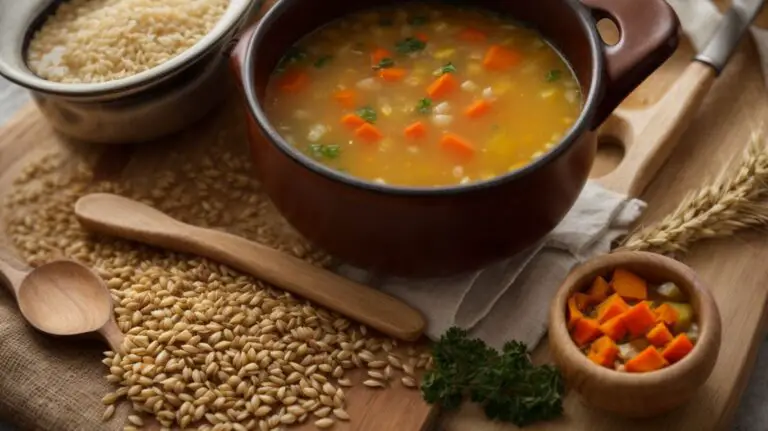How to Cook Sugar Into Caramel?
Have you ever wondered what exactly caramel is and why you should learn how to cook it?
In this article, we will explore the different types of caramel, the tools and ingredients needed for cooking it, and provide you with a step-by-step guide on how to create the perfect caramel.
We will share some tips and tricks on how to prevent crystallization, achieve the desired color and consistency, and store caramel properly.
So, let’s dive into the delicious world of caramel!
Key Takeaways:
What is Caramel?
Caramel is a rich and decadent confection made by heating sugar until it reaches a specific color and flavor profile.
As the sugar undergoes the process of caramelization, it transitions through various stages, from light amber to deep golden hues, each stage imparting a distinct taste and aroma. The transformation of sugar into caramel involves the heating of sugar granules until they melt, dissolve, and combine to form a viscous, syrup-like consistency.
Why Should You Learn How to Cook Caramel?
Learning how to cook caramel opens up a world of sweet possibilities in the kitchen, allowing one to customize desserts with their unique touch.
Mastering caramel cooking techniques not only adds depth and richness to your desserts but also gives you the freedom to experiment with various flavors and textures. Caramelization brings out the natural sweetness of sugar, creating a complex and indulgent taste profile that can elevate simple treats to gourmet status. Whether you’re making a classic caramel sauce, decadent caramel candies, or using caramel to top cakes and pastries, the skill of working with caramel opens doors to endless creative dessert options.
Types of Caramel
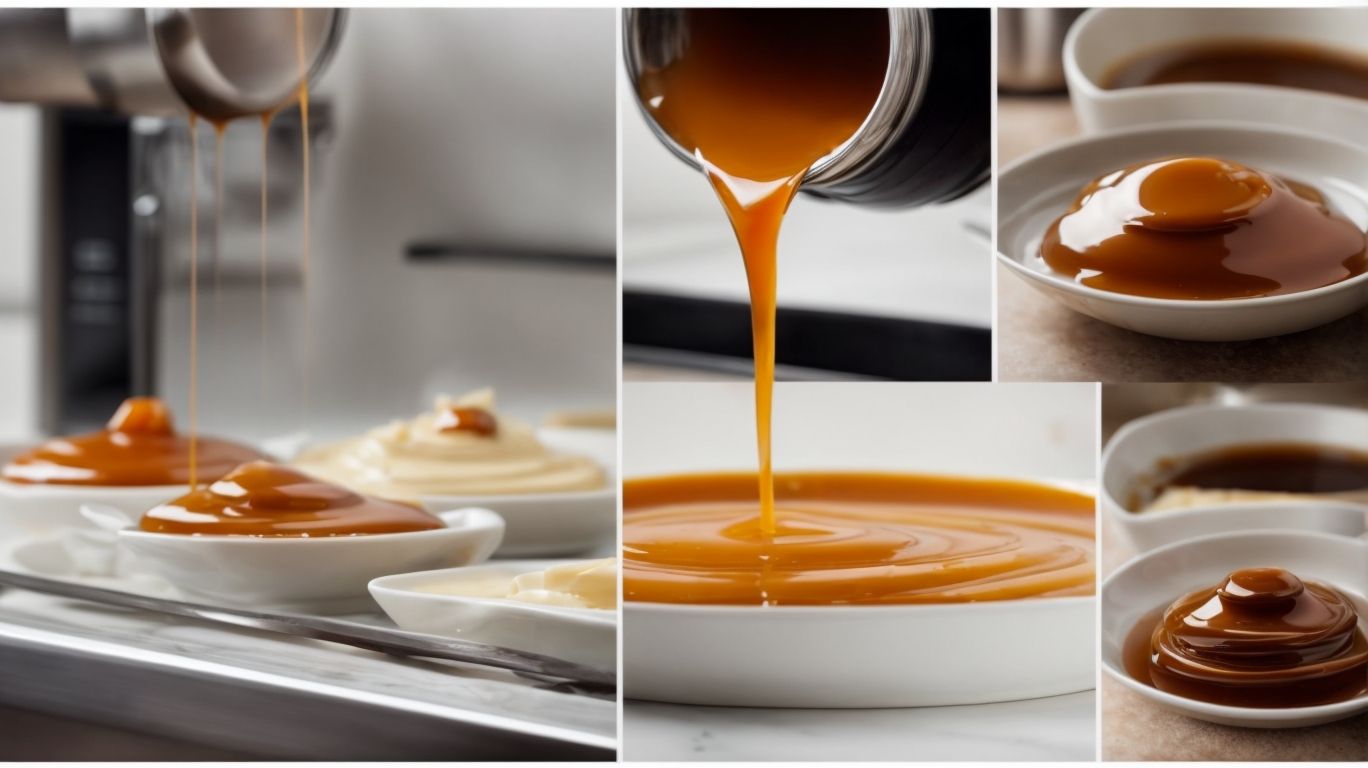
Credits: Poormet.Com – Bobby White
Caramel can be created using various methods, including the dry method, wet method, and through sugar syrup or candy making processes.
Regarding the dry method of caramelization, heat is applied directly to the sugar without any added liquids, causing the sugar to melt and caramelize. This technique requires precision and careful monitoring to prevent burning.
In contrast, the wet method involves combining sugar with water or another liquid before heating. The addition of liquid helps control the temperature and prevents the sugar from crystallizing prematurely, resulting in a smoother caramel.
Creating caramel through sugar syrup or candy-making processes involves heating sugar to a specific temperature range, leading to different stages of caramelization—from light golden to deep amber hues.
What Are the Different Types of Caramel?
The different types of caramel vary based on their stages of cooking, the presence of sugar crystals, and the bond formation that leads to caramelized sugar.
Regarding the classification of caramel based on cooking stages,
- creamy caramels are developed through gentle cooking with the addition of cream and butter, resulting in a smooth and soft texture,
- chewy caramels are cooked to a higher temperature for a longer duration, creating a firm and chewy consistency.
The structure of sugar crystals plays a crucial role in determining caramel types; small sugar crystals yield a smoother texture, while large crystals lead to a grainy texture. During caramelization, Maillard reactions occur, forming complex flavor compounds through the interaction between sugars and amino acids.
Which Type of Caramel is Best for Cooking?
The best type of caramel for cooking depends on the desired temperature, ingredients being used, color preference, and the consistency of the syrup required for the dish.
When selecting a caramel for a recipe, it is crucial to consider the temperature at which it will be cooked. Different types of caramel are suited for varying heat levels – some are perfect for high-temperature applications like caramelizing sugar quickly, while others are better for lower heat tasks such as making caramel sauces.
Ingredient compatibility is another key factor to take into account. Certain types of caramels harmonize better with specific ingredients, enhancing the overall flavor profile of the dish.
Color variations in caramel can range from light golden to deep amber, adding not just visual appeal but also altering the taste profile. The choice of color can impact the final presentation and flavor of the dish.
The thickness of the caramel syrup required can affect the outcome of the recipe. Whether a thin drizzle or a thick, sticky layer is needed, selecting the right syrup consistency is essential for achieving the desired texture in the final dish.
Tools and Ingredients Needed for Cooking Caramel
To cook caramel successfully, you will need essential tools like a heavy-bottomed pot, a candy thermometer, and key ingredients such as cream, butter, and vanilla.
Having the right tools and ingredients on hand is crucial for the perfect caramel creation. Along with the heavy-bottomed pot and candy thermometer, water plays a vital role in the caramel-making process. It helps control the temperature and consistency of the caramel.
When selecting a heat source, ensure you have a reliable stove or burner to maintain even heat distribution. The inclusion of cream adds richness, butter contributes to a smooth texture, and a touch of vanilla enhances the flavor profile of the caramel. These components work together in harmony to bring out the delectable taste of the final product.
What Tools Do You Need?
Essential tools for cooking caramel include a reliable heat source, a heavy-bottomed pot for even heat distribution, and a candy thermometer to monitor temperature accuracy.
When preparing caramel, having a consistent and steady heat source is crucial to achieving the desired texture and color without burning. A typical stove burner or induction cooktop can serve as reliable options to apply the necessary heat. Pairing this with a heavy-bottomed pot is essential as it helps distribute heat evenly, preventing hot spots and ensuring uniform cooking.
Using a candy thermometer is highly recommended to accurately gauge the temperature of the sugar mixture. This tool allows you to monitor and control the precise temperature at which the caramel reaches its ideal consistency. With the right tools in place, you can master the art of making perfectly smooth and delicious caramel creations.”
What Ingredients Do You Need?
Key ingredients for making caramel include granulated sugar for sweetness, cream for richness, butter for flavor, and vanilla for a hint of aromatic complexity.
Granulated sugar is the fundamental component that undergoes a transformation process when heated, turning into a rich, amber-colored syrup. It provides the necessary sweetness and caramelization that defines this confection.
Cream plays a crucial role in adding a smooth, velvety texture to caramel, creating a luscious mouthfeel. Butter, with its rich and savory notes, enhances the overall flavor profile, contributing to a deeper, more indulgent taste. Vanilla, a classic aromatic ingredient, imbues the caramel with a subtle yet distinct flavor that adds a layer of complexity and sophistication.
Step-by-Step Guide to Cooking Caramel
Follow this step-by-step guide to master the art of cooking caramel, from heating sugar to adding cream and butter for a luscious finish.
To start the caramelization process, begin by heating sugar in a heavy-bottomed pan over medium heat. It’s crucial to keep a close eye on the sugar as it melts to prevent burning. Once the sugar has melted into a smooth liquid, introduce a small amount of water to stop the cooking process. The addition of water helps control the temperature and prevent the sugar from crystallizing.
As the caramel progresses through various stages of color, from pale gold to deep amber, monitor the temperature and adjust accordingly. Each stage offers a distinct flavor profile, ranging from light and sweet to rich and bitter, providing a range of options for different recipes.
Step 1: Preparing the Ingredients
Begin the caramel cooking process by gathering and preparing the essential ingredients: sugar, cream, and butter.
Before commencing the actual cooking, it is vital to ensure that you have high-quality ingredients at the right temperatures.
- The sugar used should ideally be pure granulated white sugar, as it caramelizes evenly without introducing any unwanted flavors.
- The cream should be heavy cream, boasting a high fat content for richness and smoothness.
- The butter should be unsalted to allow control over the saltiness of the caramel.
Measure each ingredient precisely as accurate quantities are crucial for achieving the perfect consistency and taste.
Step 2: Heating the Sugar
Heat the sugar in a heavy-bottomed pot over low heat, allowing it to gradually melt and caramelize to achieve the desired golden hue.
When heating sugar for caramelization, it is crucial to maintain a gentle heat to avoid burning the sugar. This slow and steady process allows the sugar crystals to break down and transform into liquid form. By adding a small amount of water during the heating process, you can control the temperature and prevent the sugar from crystallizing.
As the sugar heats up, it goes through several stages of transformation. Initially, it melts into a clear syrup, then begins to darken, developing a rich amber color and deep flavor. The chemical reactions taking place during this process create the distinct caramelized taste that is prized in cooking.
Step 3: Adding the Water
Carefully add water to the caramelized sugar to create a smooth syrup consistency, ensuring proper temperature control for the desired caramel texture.
When incorporating water into caramelized sugar, the key is to do it gradually, stirring continuously to prevent the sugar from seizing. Water plays a crucial role in balancing the texture of the caramel, helping to dissolve and incorporate the sugar crystals smoothly. By adding water little by little, you can adjust the thickness of the syrup to your preference, whether you aim for a thick, rich caramel or a lighter, pourable consistency. Monitoring the temperature closely during this process is essential to avoid overcooking or undercooking the sugar, which can impact the final syrup’s thickness and flavor.
Step 4: Adding Cream and Butter
Introduce cream, butter, and a touch of vanilla to the caramel mixture, stirring gently to blend the ingredients and enhance the flavor profile.
When incorporating cream into the caramel, it brings a velvety richness and smoothness, balancing out the sweetness of the caramel with a luxurious texture.
The addition of butter adds a depth of flavor and a hint of saltiness, further enriching the caramel and giving it a decadent, buttery note.
A dash of vanilla extract uplifts the caramel with its warm, aromatic essence, creating a more complex and well-rounded flavor profile that lingers delightfully on the palate.
Step 5: Removing from Heat and Cooling
Take the caramel off the heat source and allow it to cool gradually to stabilize the caramelization process and achieve the desired consistency.
When removing the caramel from the heat, it’s crucial to prevent rapid temperature changes that could negatively impact its texture. One effective method is to transfer the caramel into a metal container or a water bath to reduce the heat exposure gradually. This gradual cooling process assists in maintaining a smooth and velvety consistency, preventing any unwanted graininess or crystallization.
To further ensure a stable caramelization process, gently stir the caramel during the cooling phase. This helps distribute the heat evenly, preventing any localized overheating that could lead to uneven textures in the final product. Once the caramel has cooled sufficiently, it is ready for further manipulation or to be poured onto prepared surfaces for molding or shaping.
Tips and Tricks for Perfect Caramel
Master the art of making perfect caramel with expert tips on preventing crystallization, achieving the desired color and consistency, and storing caramel for future use.
One common cause of crystallization in caramel is the formation of sugar crystals during the cooking process. To prevent this, make sure to wipe down the sides of the pan with a wet pastry brush to eliminate any sugar crystals that may form. Adding a small amount of acidic ingredient like lemon juice or corn syrup can help inhibit crystallization.
When adjusting the color of your caramel, keep in mind that the longer you cook it, the darker the color will become. To achieve a light caramel, cook the mixture until it reaches a pale golden color, while for a deeper color, allow it to develop into a rich amber hue.
Once your caramel is ready, store it in an airtight container at room temperature for up to two weeks. To extend its shelf life, refrigerate the caramel for around a month or freeze it for up to three months. Before using stored caramel, gently reheat it in a saucepan over low heat, stirring constantly until it reaches the desired consistency.
How to Prevent Crystalization?
To prevent crystallization in caramel, ensure thorough dissolving of sugar crystals in hot water before caramelization and avoid stirring the mixture excessively during the cooking process.
When creating caramel, the initial step of dissolving sugar in hot water plays a crucial role in achieving a smooth texture. This process allows the sugar molecules to break down evenly, reducing the chances of crystal formation. Proper dissolution sets the foundation for a successful caramelization process. Controlling the heat is another key factor in preventing crystallization. Gradually increase the temperature to avoid sudden sugar crystallization, which can ruin the caramel. Refraining from stirring too much once the mixture starts cooking is essential for maintaining the caramel’s velvety consistency.
How to Achieve the Desired Color and Consistency?
Achieving the perfect color and consistency in caramel requires careful attention to temperature control, monitoring the stages of caramelization, and adjusting heat settings for optimal results.
For a golden amber hue and smooth texture, begin by heating sugar over medium-high heat until it melts and reaches a light amber color. At this stage, ensure the sugar doesn’t burn by swirling the pan occasionally. Temperature management is key here; you want the sugar to caramelize slowly to avoid dark spots. As the sugar continues to cook, watch for the color transformation from light amber to a deep, rich caramel.
How to Store Caramel?
Properly store caramel in an airtight container at room temperature to maintain its freshness and prevent crystallization, ensuring optimal flavor retention for future use.
When choosing a container for storing caramel, opt for glass or plastic jars with tight-sealing lids to minimize exposure to air and moisture, which can lead to the degradation of flavor and texture.
Placing the container in a cool, dark area away from direct sunlight or heat sources is crucial in preserving the quality of the caramel.
If you plan to keep the caramel for an extended period, refrigeration can further extend its shelf life while maintaining its rich taste.
Frequently Asked Questions
Can I use any type of sugar to make caramel?
Yes, you can use any type of granulated sugar to make caramel. However, keep in mind that different types of sugar may affect the taste and texture of the caramel. White granulated sugar is the most commonly used for making caramel, but you can also experiment with brown sugar, coconut sugar, or even honey.
What is the best method for cooking sugar into caramel?
The best method for cooking sugar into caramel is the dry method. This involves melting the sugar in a dry pan without any added liquid. This allows the sugar to caramelize evenly without any risk of crystallization. It is important to keep a close eye on the sugar and stir constantly to prevent burning.
What is the difference between caramel sauce and caramel candy?
Caramel sauce is made by cooking sugar until it turns into a liquid and then adding butter and cream. This results in a smooth and pourable sauce. On the other hand, caramel candy is made by cooking sugar to a higher temperature, resulting in a firmer and chewier texture. Caramel sauce is typically used as a topping for desserts, while caramel candy is enjoyed as a standalone treat.
Can I store leftover caramel?
Yes, you can store leftover caramel in an airtight container in the refrigerator for up to two weeks. When reheating the caramel, place it in a heat-proof bowl over a pot of simmering water and stir until it becomes smooth and pourable again.
Is making caramel dangerous?
Cooking sugar into caramel involves working with extremely hot melted sugar, which can cause severe burns if not handled carefully. It is important to use caution and protective equipment such as oven mitts and a long-handled spoon when making caramel. Also, be sure to keep children and pets away from the cooking area to avoid any accidents.
What are some creative ways to use caramel?
Caramel is a versatile ingredient and can be used in a variety of ways. Some popular uses include drizzling it over ice cream, using it as a filling for cakes or pastries, or incorporating it into homemade candies and desserts. You can also add it to your coffee or hot chocolate for a sweet and indulgent treat.

